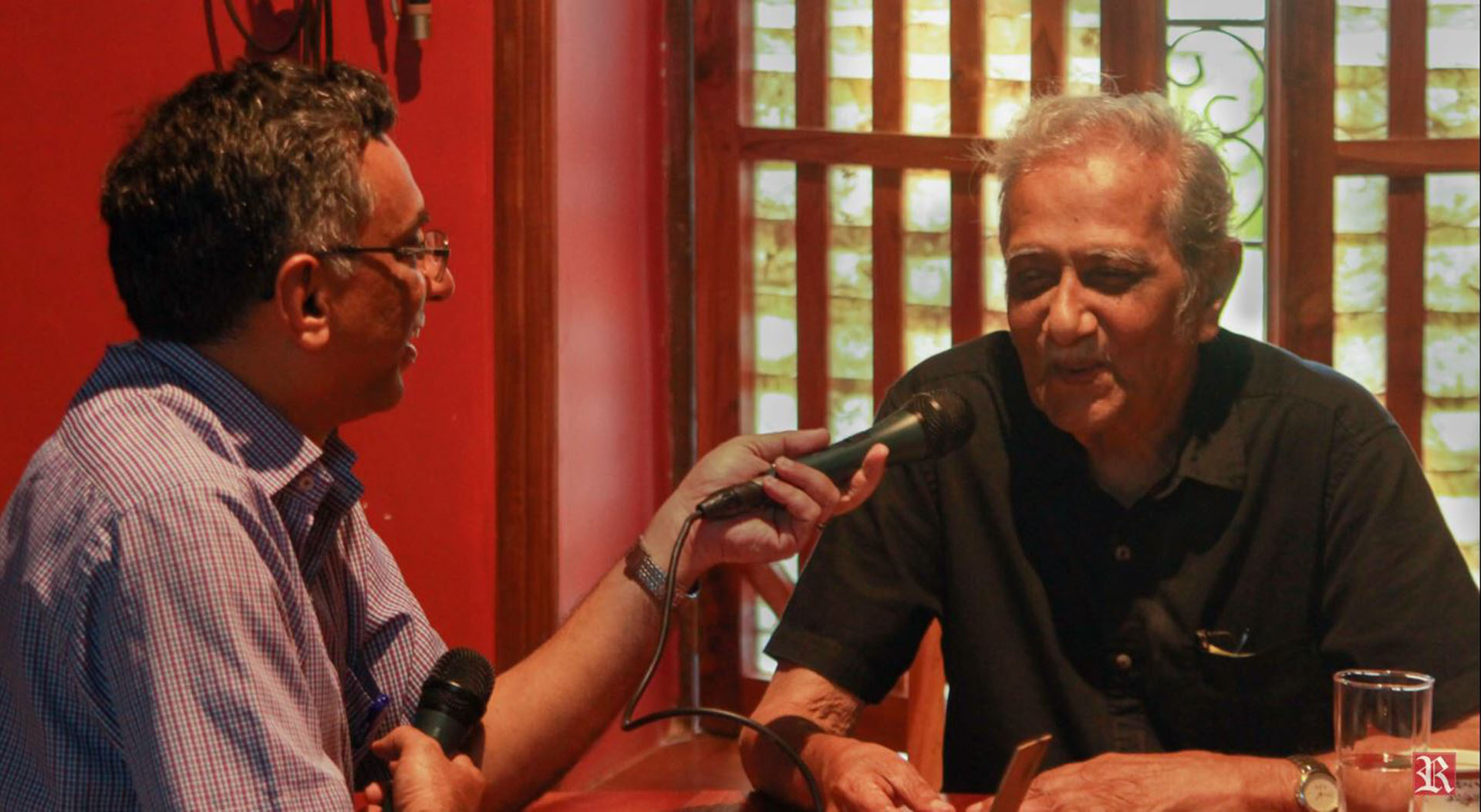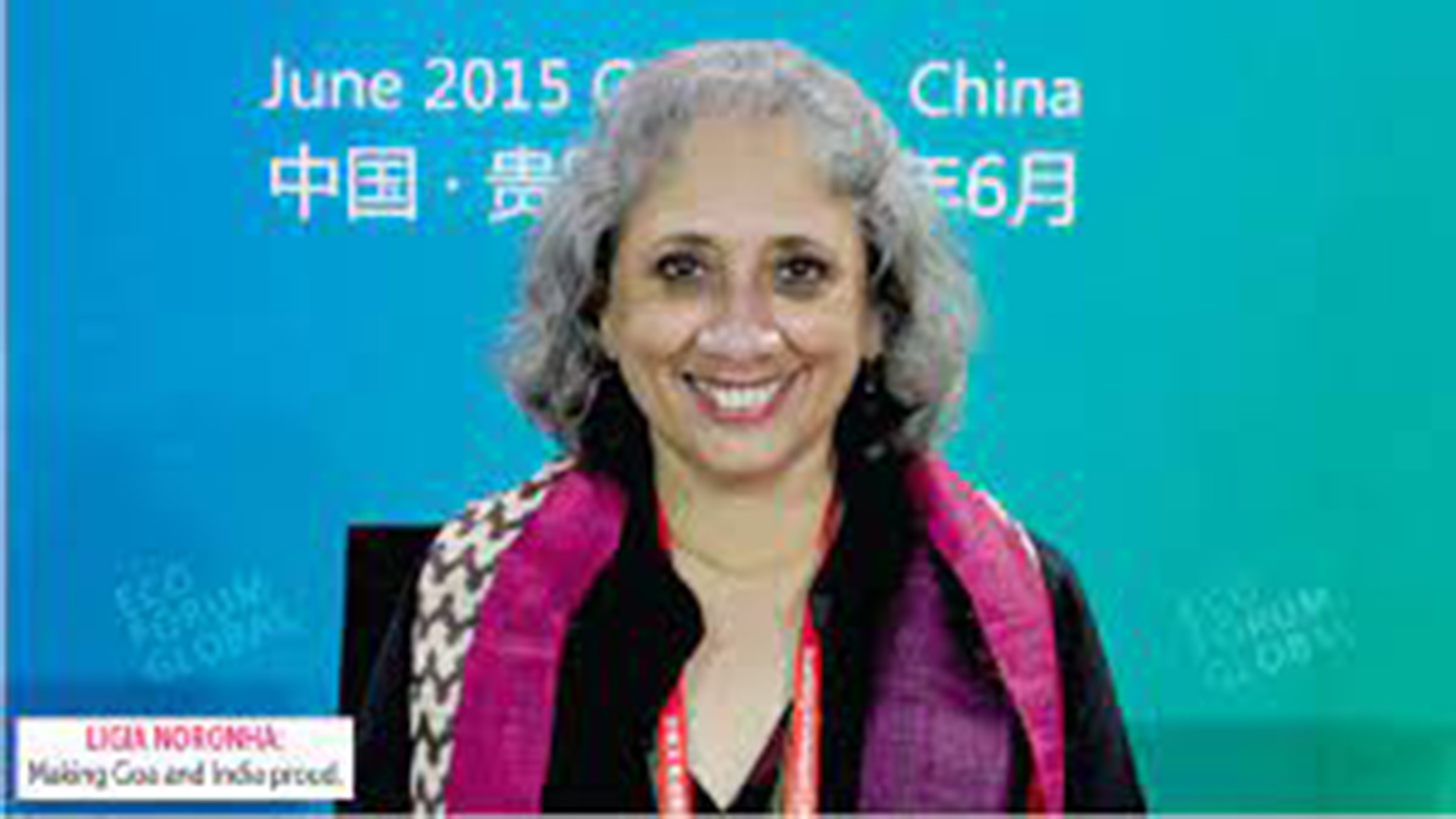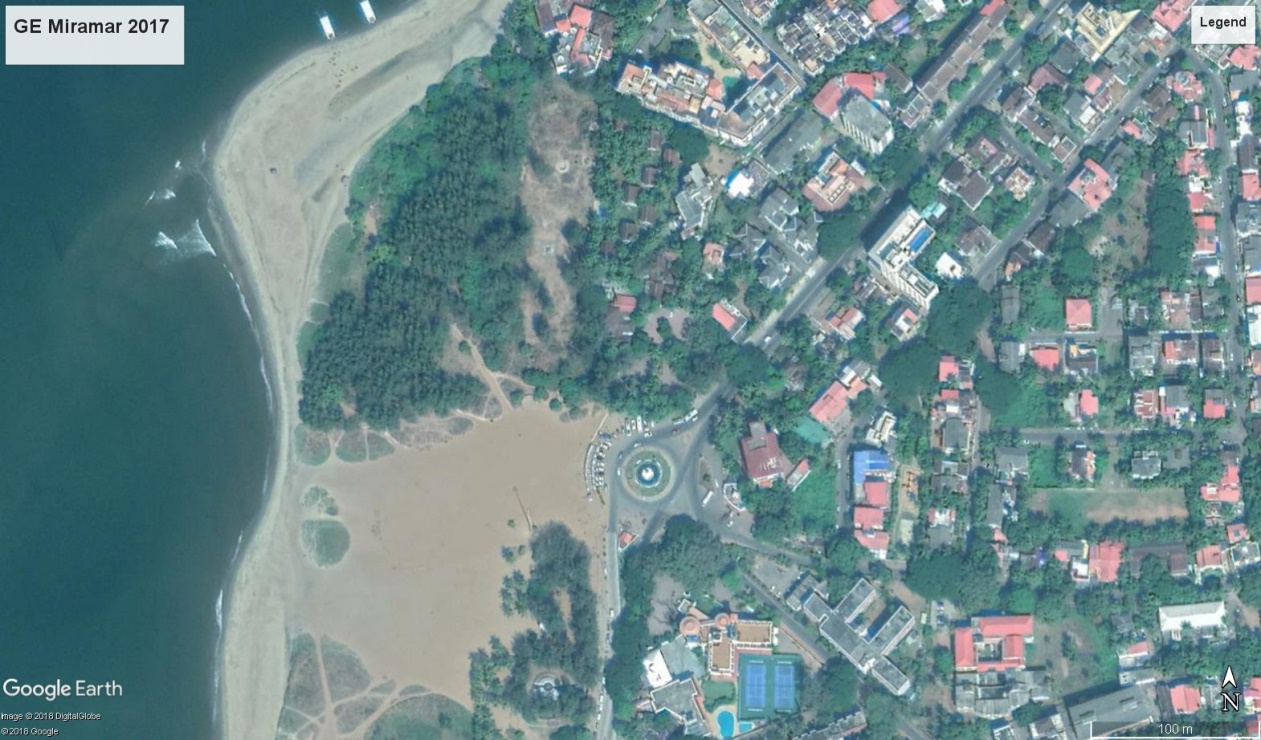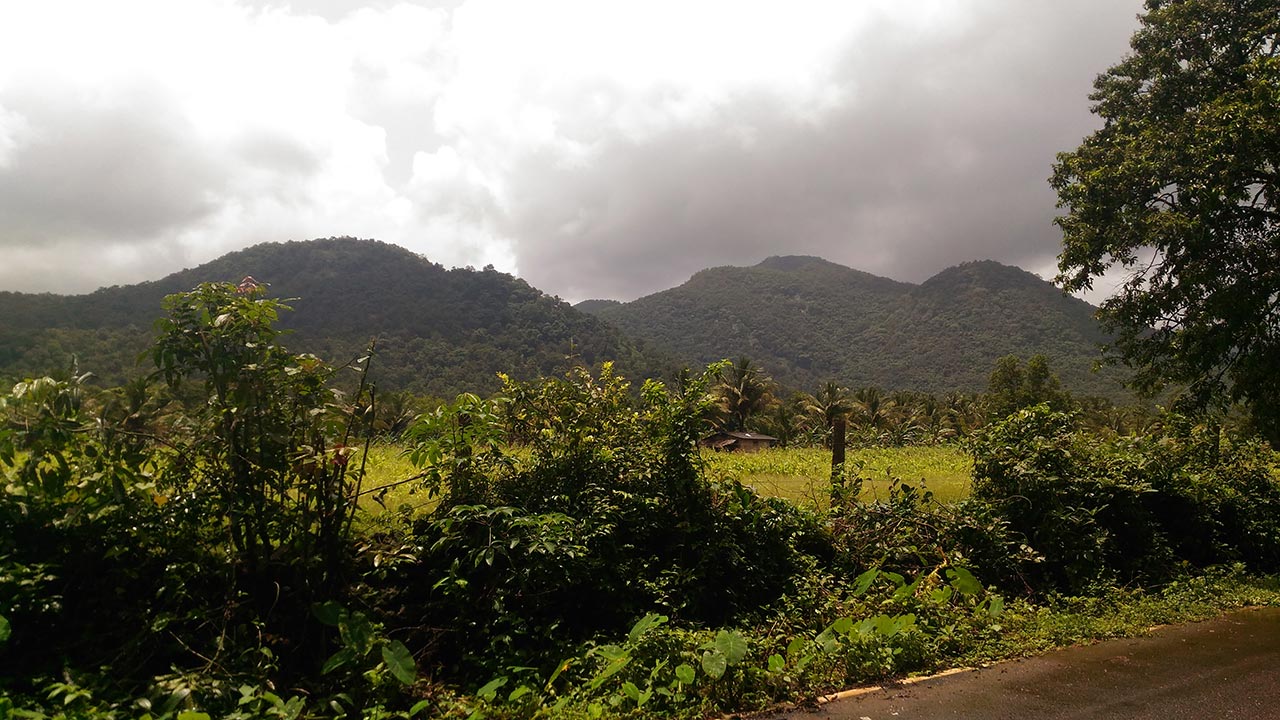Early days of Mining in Goa
Mining activity changed the face of Goa, says Manuel (Manecas) Costa, one of Goa’s senior-most mining concessionnaires, in a chat with Óscar de Noronha, on the monthly Renascença Goa show.
O.N. – Mr Manuel da Costa, to start with, please tell us how you got into the mining business.
M.C.: I was studying in Belgaum and I returned to Goa in the year 1952. Here, many people were talking about mining and the extraction of iron ore. I was quite interested in those conversations. I started a business of transportation of ore as there was a shortage of trucks. In fact, there was a shortage of all machinery for mining. I started with five lorries to transport mineral. In the first year I transported iron ore from M. S. Talaulikar Mines, from Sacordem to Collem railway station. Then I received another proposal to transport iron ore from Pissurlem. For the payment, Mr Vasudev Salgãocar came with his employee named Parkot who carried a small brief case full of money. In those days everything was limited because of a lack of finance. He came in a small car, Baby Austin. He was also in the beginning of business. And that year, I was informed that he extracted only 60,000 to 80,000 tonnes.
O.N. – Which year are you talking about?
M.C.: 1953 or 1954. Thus I launched into the mining business. When I went with my lorries to the mines, I used to observe the manner in which the material was extracted. I saw them separating the ore according to percentage. They extracted manually, everything by hand, with manual labour, as there was no machinery. Later on, I bought a compressor with a drilling attachment. And that is how everyone else also went on improving their mining extraction.
O.N. – Did this extracted ore already have a commercial demand?
M.C.: In the year 1954 or 1955, the exporters, namely, S. Shantilal, Vasudev Salgãocar, Chowgule, and some others were invited to Europe for consultations on financing by barter system. Under the barter system, ore would be exported from Goa. The purchasers had other agencies that were financiers; they were the intermediaries to ascertain that the ore would be furnished from Goa. For example, V. M. Salgãocar had a contract with Ciba, who were into pharmaceuticals. They probably also had other activities. Ciba had a representative based in Goa to observe and ensure that Salgãocar would carry out the whole contract. With the barter system it was advantageous for them because they managed to purchase lorries and other necessary machinery. Salgãocar imported a shipload of Bedford trucks, and so did Shantilal and the other companies who also bought trucks and thereby improved their transportation system. Thus they improved their situation. However, business was limited and the prices were low, extremely low. As the work was manual, the sourcing and extraction of ore was limited and so exports were limited, too. The rates were low, so we had to organize our business in such a way as to manage to get some profits. The exchange rate was two rupees to the dollar. However, the other materials were cheap. For example, petrol was @ 10 paise per litre and diesel @ 8 paise per litre. Labour wages were standard but low as compared to today. And that’s how our business went on.
Mining Laws and Processes
O.N.: Mr. Costa, when was the first law of mines decreed?
M.C.: It was the Declaration of 1906.
O.N.: And when did mining activity begin?
M.C.: Surveys were being carried out. In 1908, a French company from Calcutta came to Goa to carry out a geological survey. As they didn’t have the machinery that we have nowadays, they opened a tunnel digging up to 4-5 metres.
O.N.: In which part of Goa was the tunnel?
M.C.: There dug two or three tunnels in Mulgao, Bicholim. Subsequently, six claims were put up by M. M. T. de Souza.
O.N.: Did the land belong to the Comunidades or to the State?
M.C.: This I don’t know; maybe partly private and partly State.
O.N.: When was the first concession given to Mr De Souza?
M.C.: In 1941.
O.N.: From 1908 to 1941... Well, that was quite a long interval!
M.C.: It was a long interval, but I had heard that one Mr Pereira from Vasco da Gama also had a concession in Sacordem or somewhere around there and had been extracting ore much before 1941.
O.N.: How were these concessions granted? What was the process?
M.C.: In those days, unfortunately, money was in short supply. If anyone had a hundred rupees, everyone around would say, ‘Oh! Here comes a capitalist’. To get a license for mines, four or five guys used to get together and contribute Rs 50, Rs 40 and Rs 20 and put together Rs 200. Then they could apply to the Government for a mining concession.
It was a simple process. All the local demarcation points had to be made. The person who applied had to fix a plaque in one or two places. Thus people could read the name of the person who had applied. These nameplates were fixed on trees or some visible spots. And the sign had to mention that so and so had applied for a ‘claim’… using this word, ‘claim’…
O.N. You mean the word ‘claim’ in English?
M.C.: Yes, claim for this plot for extraction of iron, manganese or something to that effect. The sign plate would remain there for some time. After the application was made, the government would publish in the official gazette that that particular area had been applied for by so and so person, giving 180 days for anyone to file any appeals. After this time had lapsed, the government would issue a certificate of manifest. The people holding these manifests could approach different individuals and offer to sell them for a better price. These were sold for a profit of two hundred or four hundred rupees. The person who bought the manifest would then continue the process of registration, which cost less than a thousand rupees. Thus they would manage to get a title of concession.
O.N.: Was this title of concession for life?
M.C.: This title of concession was a perpetual lease, as if it was your personal property. The person would be the owner of the concession.
O.N.: Were there any other conditions and charges? How did he pay the State?
M.C.: During those days, the Portuguese charged a pittance. Even during the exploration, the charges were not very high. Many people took this initiative because the process was more liberal.
O.N.: What about technical personnel?
M.C.: Well, in those days there were hardly any technicians. Even big companies did not have competent technicians or geologists. There were some companies who were assayers to analyze the ore and determine the percentage of iron and manganese content in the ore. But there were no proper machines to determine what was lying below the soil. It was difficult due to the lack of proper machinery; however, two or three companies brought geologists from Germany, etc. That was a novelty in those days.
O.N.: Where was this ore exported to in those days?
M.C.: Initially it was meant for Europe, but soon thereafter, the Japanese came and met some mine owners here, especially Chowgule that tied up for a long association with that Japanese company. In those days, Chowgule was in the initial stage of their business and so was the Japanese company, as their business had been badly destroyed by the Second World War.
O.N.: Was the mining industry well established and organized? I mean, was there any association of miners?
M.C.: No, almost none.
O.N.: Did they not have an association during the Portuguese regime?
M.C.: There wasn’t any, nor was it necessary.
O.N.: And when was the Goa Mineral Ore Exporters Association set up?
M.C.: The Exporters Association came up well after Liberation. The Goa Mining Association also came up later.
Benefits of Mining in Goa
O.N.: What were the benefits of the mining industry for Goa?
M.C.: In Goa, around the 1950’s, there were no industries. There were agriculturists, etc. Some people worked on ships or proceeded to Bombay for other employment. There was no room for progress. Schools were limited and studies were in the Portuguese language.
O.N.: So, the mining industry came and changed the face of Goa….
M.C.: Yes, mining changed Goa in a big way. There were great changes, because normally the mines were located in the interior. And where there were mining deposits there were no proper roads, especially in the districts of Bicholim and Satari, Dharbandora, Sanguem and part of Quepem. In Canacona, there wasn’t much mining. All these districts that I just mentioned were part of Novas Conquistas (New Conquests). The Velhas Conquistas (Old Conquests) were more advanced; there were proper roads, cities with electricity, etc. and life was more comfortable. But the Novas Conquistas really needed much help. There were no proper schools, no proper hospitals, almost no transport and there were no roads for transportation. For example, there was a road from Mapuçá which passed through Sanquelim, Bicholim via Usgão, came to Pondá and proceeded to Margão. They were mud roads without asphalt and the journey was very uncomfortable. Nowadays, if there is a pothole here or there, there are protests all over the place. They do not know the difficulties we went through.
O.N.: So, in the initial years of mining, it wasn’t a simple life!
M.C.: It was quite hard not only because of the lack of transport but our lifestyle itself was totally different. There was nothing to eat and drink in those areas, and one had to travel at least 6 km to get a cup of tea.
O.N.: Were you staying at the mines?
M.C.: Yes, I was. I had a small little hut. And when I built the house, I also had my supplies. But also the work increased tremendously. One had to go from the mines to the point of embarkation where the barges were loaded. All the work was manual. Later on these docks were mechanized and they were loaded with self-loading trucks. Of course, in my time, to load up a barge of 250 tonne capacity, we needed 200 people. They used troughs, which were loaded with material and carried on the head and dumped in the barge over a gang plank/jetty which was made of wood. It was a temporary structure. Fortunately, the laws were not so rigorous. Today, to do something, it requires at least five to fifteen licences. My ore would be transported over a distance of 6-7 km to the jetty. The lorries were loaded and discharged onto the barges, again by hand. I used to be paid only Rs 11 for a tonne of ore. But then, that was money in those days!
Getting out of the Impasse
O.N.: Mr Costa, the mining industry has reached an impasse. How does one come out of it?
M.C.: Very difficult. In 1987, when our concessions were converted into mining leases, we the miners referred the matter to the Supreme Court, explaining that we had perpetual leases which were ours personally. Unfortunately, the case has not yet been taken up for hearing by the Supreme Court.
O.N.: Do you still work?
M.C.: Oh yes, I still work. I mean, even though the mining business has been discontinued, there is still a lot of work left to be done; we still have to handle many of the issues.
O.N.: Working is good for health!
M.C.: Yes, I agree, it’s very good for health!
O.N.: One last question… What if you had to start all this work in mining once again…?
M.C.: Under what conditions? Today we are quite advanced in the exploration of mines. We know the mining laws. But I saw what happened in the years 2005, 2006 and 2007, when the demand for iron ore increased, the way the local people and the NGOs acted. If we restart the business, we know what to expect.
O.N.: Anyway, you have done what was possible and what needed to be done; you’ve worked 50 years in mining and are the oldest man in the Goa mining industry….
M.C.: One of the oldest!
O.N.: And so, let me wish you good health and lots of happiness.
M.C.: Thank you very much.
Translated by Caetano Filipe Colaço
First published in Revista da Casa de Goa, Series II, No. 10 (Jul-Aug 2021)
Use the following link to listen to the original chat in Portuguese on the YouTube channel of Renascença Goa:
https://www.youtube.com/watch?v=FtqG5bONwWs&t=1641s
A Goan at the UN
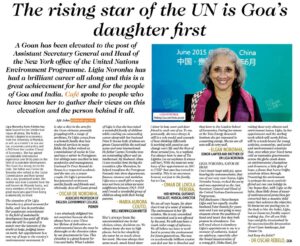
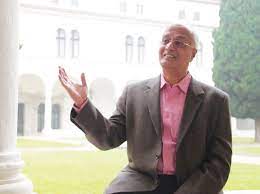
Our ancestors respected nature and lived in harmony with it!
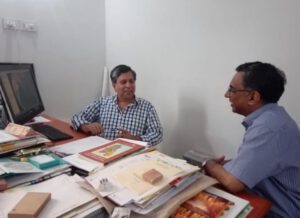
“Our ancestors were more sensible. They respected nature and lived in harmony with it,” says Scientist António Mascarenhas, formerly of National Institute of Oceanography, Goa, while assessing the state of the Goan environment, in an interview with Óscar de Noronha.
For original interview in Portuguese
https://www.youtube.com/watch?v=-BvDOm45GCQ&t=759s
O.N. – What are the issues afflicting Goa's natural environment at this time?
A.M. – There are several issues, right from our forest heritage to more serious ones, such as the improper exploitation of our mining resources, the levelling of khazans (wetlands) to build housing complexes; the contamination of our rivers – and now also the attempt to nationalize them, and so on. But to me, the conservation of the dune-beach ecosystems is the most serious issue that exists.
O.N. – What’s the reason for that?
A.M. – Well, any human action on the landscape results in two types of impacts: reversible or irreversible. Now, the disappearance of the frontal dunes causes the beach to recede, making the coastline much more vulnerable to the action of the sea.
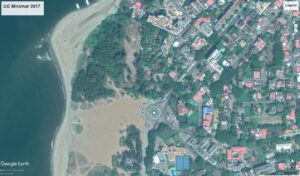
O.N. – So, in order to properly address the environmental status of our territory, we must qualify these matters, mustn’t we?
A.M. – For sure! Google Earth shows where Goa stands! Let’s, then, do a fly-by, say from our beaches to the Western Ghats, across the khazans that are our rice paddy fields. We will see the kind of impact that the different areas of the territory have suffered. For example, if a forest is destroyed, the system can be rejuvenated; and a contaminated river can be oxygenated; even khazans converted into a housing area is recoverable. But the destruction of the coast is almost always irreversible.
O.N. – What examples do you have of this in Goa?
A.M. – Well, in Sinquerim and Candolim, the beach retreated due the impact of the River Princess ship that was stuck there for twelve long years! The dunes were flattened also to make place for hotels and residences. The fact is that the dunes do not get replenished easily; sometimes the sand takes decades to come back. Of course, to speed up the process, the beach can be nourished, by filling up the affected parts with new sand. This process also occurs naturally during the period after the monsoon, between September and March. For example, in Baga, Morjim and Querim, a sandy tip is formed. The tip is caused by the sand transported by the coastal current that enters the river or estuary, and is then pushed counterclockwise by the sea. Further north, the dunes disappeared to make way for shacks, with the exception of Mandrem, Morjim and Galgibaga…
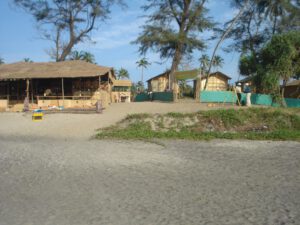
O.N. – The case of Galgibaga, in the taluka of Canacona, is different, isn't it?
A.M. – Yes. This area is protected by the Coastal Regulation Zone (CRZ) law, and is considered a breeding ground for turtles, one of the four sites in Goa. Hence, urban development in this place is completely forbidden. And thus the beach has remained well preserved. But on those dunes, there are small little houses that function as restaurants. The National Green Tribunal has ordered their demolition.
O.N. – As far as I know, the dune protection in Miramar was one of the first environmental campaigns that you undertook, in 2007, well over a decade ago...
A.M. – That's right. I was part of the Goa Coastal Zone Management Authority, and am at present a member of the Goa Biodiversity Board. One of the projects we proposed was to save these frontal dunes. Some sites have been indicated where you can replicate that experience of dune reconstruction. Miramar beach is already being considered for this.
And talking of Miramar: here you find a semi-circular sand deposit, in the form of a sand bar, perhaps one of the few its kind in the world. It accretes and gets washed out, and then the sand comes back during the monsoon. It is an annual phenomenon and has been going on for centuries. The feast of the church of St. Lawrence, on the Sinquerim hilltop, from where you can see the silting, coincides with the opening of the sand bar…. I don’t know the connection.
O.N. – That was one reason why Albuquerque had to wait until the end of the monsoon to win Goa back... Here we see a connection between a natural phenomenon and a historical occurrence….!
A.M. – That's right. There is that 'tongue of sand’ at the site, now known as the Aguada sandbar. Here the navigation channel is very narrow and, after the monsoon, it opens up naturally. Unfortunately, the authorities are thinking of dredging the channel, and that’s going to be a real tragedy. Scientist C. S. Murthy has described the functioning of this area. The currents go south to north while on the other side they flow from north to south. On the coast, the currents run from south to north, from Caranzalem to Miramar; and from north to south, from Campal to Miramar. This process is responsible for the formation of the tongue of sand in Miramar. During the monsoon, when the waves caused by the winds from the west reach Miramar, they cause sand erosion; and later, when the good weather returns, the currents get normalized, helping to rejuvenate the beach. This has been an annual process noticed for decades.
O.N. – And does that protect the coast?
A.M. – Well, it was wrongly assumed that the coast would be protected with the construction of a barrier or wall made of large basalt stones brought perhaps from Maharashtra. But this wall has caused the beach to disappear and today we only have those stones left there. This human action on the beach has had consequences just in front of the old Medical School. The Campal stream flows out here. At this point a sandbar has emerged, blocking the passage of the said stream.
O.N. – By and large, is the ecology of the capital city at risk?
A.M. – The danger is not of very great proportions but it is also not something that can be ignored. For example, saline water enters and flows up to where the Fire Brigade is currently located. Despite this, there are many who have an interest in reducing the status of the stream to that of a nullah, a mere drain. The geological maps of the Survey of India of 1965 prove that there is movement of the tidal waters. Therefore, the stream is comes under the purview of special laws relating to the preservation of coastal zones. On the other hand, if it is reduced to the status of nullah, the said area will be outside the scope of those laws.
O.N. – There was destruction of the dunes when the area of Caranzalém was urbanized... What irreversible effects are we witnessing today?
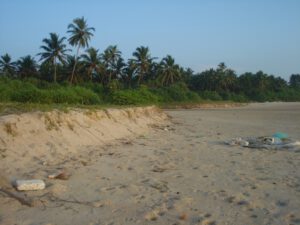
A.M. – Well, in the 1990s the Caranzalém swamps began to disappear, which today are the largest urban area located in the wetlands in Goa. Before this, in the 1970s, the largest area that suffered destruction was where the bus terminus of the capital is located. Today, the high-rise buildings there have their foundations as though floating in the groundwater. These waters are now contaminated. All the wells in the city suburbs have no potable water – whereas I have a fresh-water well at my house in the village of Raia.
O.N. – And for that matter, what is your say on the Mandovi, which is the hope of salvation not only for the capital but also for the territory?
A.M. – It so happens that the neighbouring state Karnataka, where the Mandovi is born, has been trying to divert the water at the very source. The case is in court. Meanwhile, today, Mandovi's condition is nowhere near the same as that of Delhi's Yamuna or Bangalore's Ulsoor Lake. It is less oxygenated but, fortunately, not only does the monsoon refresh the river but also its connection to the sea neutralizes all harmful influences.
O.N. – You have been a scientist at the National Institute of Oceanography... What is the relationship between oceanography and the ecology of the hinterland?
A.M. – Let me explain: The oceans are controlled by the tides twice a day. The water levels rise and fall. The same happens in rivers. In Goa, the impact of the sea is felt up to the remote village of Savoi Verem, in the taluka of Ponda, and up to the village of Macazana of the taluka of Salcete there is appreciable amplitude of tides and saline influx. So, the ocean is connected with the smallest stream. This is confirmed by mangroves, which indicate the presence of saline water. In fact, the area that goes from Cortalim to Macazana, passing through Curtorim and Rachol, has large mangrove swamps. The same can be said of the area between Carambolim and Agaçaim, passing through Azossim, Mandur and Neura.
O.N. – Which is the regulatory authority for wetlands?
A.M. – Well, it is interesting to note that all khazans belong to our Comunidades (agricultural communities). But presently the recently formed Wetland Authority of Goa is in charge. The khazans function as reserves of drinking water. Hence it is essential that our Comunidades are aware of the issues and assert themselves.
O.N. – It seems that the mangroves have helped to afforest the territory…
A.M. – That's right. But this too has to be controlled because mangroves are "colonizers". For example, in Panjim, a mangrove has appeared in an area that was traditionally a salt pan. Likewise, the floodplains at lower levels are now invaded by these trees; and this prevents farmers from cultivating the fields.... These mangroves have engulfed the Linhares Bridge from Panjim to Ribandar and are thus destroying the identity of the historic bridge. And to complicate matters further, there is a garbage treatment plant in the middle of the same mangrove lagoon. These are matters that call for attention.
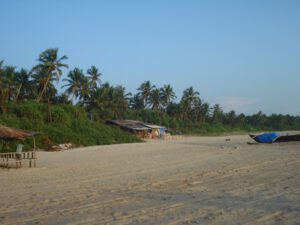
O.N. – You are a recipient of the ‘Green Heroes’ award from TERI (Tata Energy and Resources Institute), New Delhi. You write regularly for the newspapers, popularizing many of the subjects we’ve talked about today… Is the level of public participation in these matters something that satisfies you?
A.M. – I’m neither satisfied nor frustrated. For 36 years I worked at the National Institute of Oceanography in Goa, a public funded organization. Salaries are paid by the Public Exchequer; hence my primary duty is to meet the needs of society in general and, in particular, to contribute to the conservation of nature.
Of course, public participation in these matters could have and should have been better.... We have the obligation to know the functioning of natural ecosystems: the functioning of the coast and the hills that are found in the hinterland. But it seems that today we suffer from information overload. There are many who do not read, there are others who read but do nothing, and only a few who do act proactively.
But the important thing is that to have proper planning and coordination between the authorities. To manage these issues, a cross-sectoral approach is indispensable. And there should be no politicking. The whole matter must be treated as a sacred cow: the mangroves, dunes, marshes, tidal areas, beaches are all sacred. They are exclusively under the responsibility of Coastal Regulation Zone I (CRZ I), but there have been deviations, there have been transgressions…
O.N. – You’ve travelled through Europe. What initiatives have you noticed?
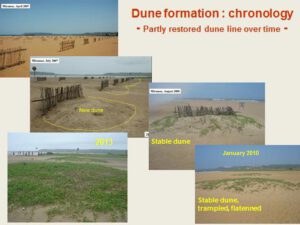
A.M. – For example, in 2007, I visited the University of Algarve, as a fellow of Fundação Oriente. The sand dune systems there have been recreated. On the beach of Tavira, in a part of the marsh called Ria Formosa, there are now long dune areas; these have been artificially reconstituted but work naturally. Some wooden bridges have also been built that help visitors move to the beach without trampling the frontal dune. Faro beach is a good example of conservation of the fore dunes.
We have similar examples In France. The beach nourishment technique is employed for sand restoration purposes, and this controls erosion. Also erection of wooden fences blocks wind borne sand; and over time these sandy deposits become the frontal dunes.
That's precisely what we propose for Miramar Beach. Well, it also helps to have plantations on the dunes: they help stabilize the dunes.
O.N. – It is obvious that much depends on the political will and public participation in safeguarding our heritage...
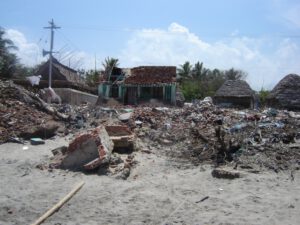
A.M. – Yes, there’s no doubt about that. I would be happy if the authorities and the general public were convinced of the great importance of the conservation of natural systems, in particular the coastal area, our beaches and the dunes. These are the first line of defence against the incursions of the sea. If we save the dunes, the population will be saved in the event of an attack from the sea. The tsunami of the year 2004, which devastated parts of Tamil Nadu, has already proven this theory right. I always say that the population was decimated not by the tsunami but by our recklessness in provoking the forces of nature, with construction of urban structures in inappropriate places. In this respect, our ancestors were more sensible. They respected nature and lived hand in hand with it. Thus, from Canacona to Pernem, they were always safe and sound.
O.N. – Well, it was a pleasure talking to you. Thank you for the panoramic view that you gave us on a topic of great importance to our beloved Goa. Thank you.
A.M. – Thank you! Thank you very much!
(First published in Revista da Casa de Goa, II Serie, N.º 6, Set.º-Out.º de 2020)
https://documentcloud.adobe.com/link/track?uri=urn:aaid:scds:US:80665fef-61a8-44bb-988a-e697ace84c22
Why I grieve for Brazil
Who could remain unruffled in the face of the fires raging in the Amazon? My heart went out to Brazil as I watched that footage on television. I was equally distressed last year, when flames consumed that country’s oldest and most important historical and scientific museum.
A lot more connects me as a Goan to the vibrant South American nation, a cultural melting pot many times larger than my land.
The Goan connection
As a Goan, I grieve at the way things turned out for the Museu Nacional, Rio de Janeiro, on that fateful night of 2 September 2018. Founded in 1818, by king Dom João VI of Portugal, the museum housed precious collections of natural history and science built up over a couple of centuries. The edifice was earlier the home of the Portuguese royal family in exile (1808-1821), and thus had a close bond with Goa. Even after the Brazilian imperial family took over (1822-1889) Goa continued to enjoy relations with that country.
With the monarchy gone, the old royal museum moved into the palace. When I saw the blaze, I had a flashback of that king who had settled in his American colony following the Napoleonic invasions; of his young son, Dom Pedro IV (1798-1834), whose heart bled for Portugal; and, finally, of an eminent Goan, Bernardo Peres da Silva (1775-1844), who, as a friend of the latter, must have stepped into the palace several times to discuss the sad state of affairs in their tiny nation across the Atlantic.
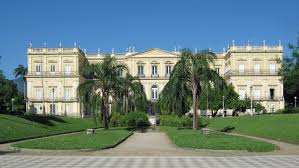
Peres da Silva belonged to the first batch of Goa’s deputies to the Portuguese Parliament. On his first two stints, he couldn’t take his seat for the Absolutists had dissolved the Cortes. In 1822, a circuitous trip via Mozambique and Rio de Janeiro, by force of circumstances, delayed his arrival in Lisbon. In 1827, he went on self-imposed exile to Plymouth (England) and sailed thence to Rio. He returned to Portugal only after Dom Pedro IV had reclaimed the crown from his younger brother Dom Miguel.
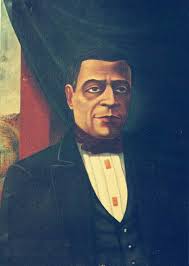
In Diálogo entre um doutor em philosophia e um portuguez da Índia (Rio de Janeiro: Tip. Nacional, 1832), the first-ever publication by a Goan in Brazil, Peres da Silva espoused the Liberal cause. He dedicated that political essay to the youth of Portuguese India. He was rewarded for his loyalty by being appointed Prefeito dos Estados da Índia. The response to his mixed bag of reforms in Goa was altogether another matter. A coup ousted the colony’s first and last native civil governor, who was indeed a unique gift from the Emperor of Brazil and Regent of Portugal, Dom Pedro IV, to Portuguese India.
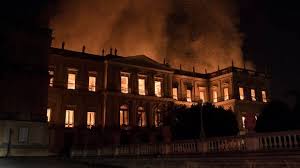 The human connection
The human connection
Well, a lot more connects me as a Goan to the vibrant South American nation, a cultural melting pot many times larger than my land. However, given that the house is presently on fire, I’d restrict myself to ecological parallels. For instance, the Western Ghats are to Goa what the Amazon is to Brazil: rainforests both, which together with their global counterparts fulfil forty per cent of the earth’s oxygen needs.
It is, then, as a human that I grieve for the inferno that set off in the Amazon on 23 August 2019. Representing over half of the planet's rainforests, it is the world’s largest and most bio-diverse tract of tropical jungle, with an estimated 390 billion individual trees divided into 16,000 species. The Amazon basin has an area of 7,000,000 km2, of which eighty per cent (5,500,000 km2) is wooded. Although its name is synonymous with Brazil, the Amazon does not belong to Brazil alone. It is perhaps less known that, while 58.4% of the rainforests are within the Brazilian borders, the rest is shared by eight countries: Peru (12.8%), Bolivia (7.7%), Colombia (7.1%), Venezuela (6.1%), Guyana (3.1%), Suriname (2.5%), French Guyana (1.4%), and Ecuador (1%).
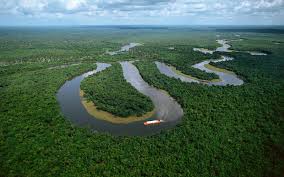
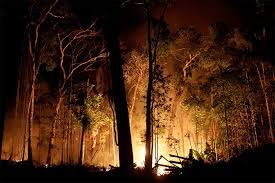
Out of those nine, only French Guyana is not an independent state but an overseas department and region of France. Bordering Brazil to the east and Suriname to the west, it is the only territory of the mainland Americas fully integrated in a European country. Hence, the Amazon’s well-being is the duty of France too. But alas, wildfires apart, deforestation for farming is one of the most serious threats to the woodlands – and, what’s more, all nine jurisdictions are guilty of the crime.
When I grieve for Brazil – the world in miniature – I also grieve for the world as a whole.
If so, why is Brazil alone under the scanner? Its main accuser, France, is at fault, too – in fact in Europe and America. It didn’t do enough for the Notre-Dame, one of the greatest specimens of world cultural heritage: the cathedral lost its roof, spires and more. Yet, the haughty French are shouting it from the rooftops that Brazil lacks commitment to the Paris Agreement. Clearly, while wildfires keep ravaging every forested region of France, French lessons in fire-fighting are just out of place!
Without exonerating Brazil’s acts of commission or omission, sources affirm that media coverage of the Amazonian fires has been misleading. It’s also difficult to believe La France. By her distinctive subtilité, she is known to skew public opinion, as she did, notoriously, in the then war against Iraq. Two centuries ago, an imperialistic France caused the Portuguese monarch to flee to Brazil. And now they’re questioning Brazil’s sovereignty over the rainforests! For sure, no country should take the high moral ground when they’re hiding charred skeletons in their cupboards.
Invaluable heritage
So, when I grieve for Brazil – the world in miniature – I also grieve for the world as a whole. I grieve for the intentional or unintentional pillage, be it cultural or environmental, of our global village. I finally remind myself that “playing with fire” is more than an idiomatic phrase; it’s indeed a sharp pointer to the invaluable, irreplaceable character of our shared, global heritage.
The State of our Forests
Over thirty citizens, including environmentalists and social scientists, met in the city, Sunday morning, on the eve of World Forest Day, to discuss the present state of Goa’s forests and draw out comprehensive measures to preserve the existing tree cover and conduct active reforestation and afforestation programmes.
The day-long seminar convened by Reggie Gomes of the Goa Research Institute for Development (GRID) was inaugurated by Mr Sinha, Conservator of Forests. Speakers included Claude Alvares, K. D. Sadhale and Dr A. G. Untawale.
We must also interact with lobbies like mine owners and real estate developers, learn their viewpoint and embark on a cooperative effort to save the land.
Papers
Mr Sinha said in his inaugural speech that monoculture of eucalyptus and teak trees and the conversion of virgin forests into artificial plantation areas were two bad features of local forestry. He estimated 24% of the total area of the union territory of today to be under forest cover. The annual revenue of the Forest Department is around seventy lakh rupees, half of which is spent back on forests, he said. One of the afforestation schemes started by the local government is in cooperation with the Comunidades. Though the seeds are provided by the government free of cost, the profits of the cultivation are to be equally shared, he said.
Mr Sadhale spoke on “Forest Conservation Strategy in Goa”. He decried the rampant denudation in the territory, accusing the governmental staff of conniving with antisocial elements. He said that natural generation of new forests is in danger due to overgrazing, spread of ground fire, kumeri cultivation, spread of eupatorium weeds, green manure, and soil erosion, among other things. He called upon the government to adopt a “go-slow policy” as regards the tourism industry, industrialization and irrigation projects.
Claude Alvares, in a forceful presentation of some strategies for reforestation, branded the Forest Department a “colonial institution” whose sole aim is to draw maximum profits unmindful of the real cost-benefit ratio. He applauded the government’s idea of planting mixed species of trees
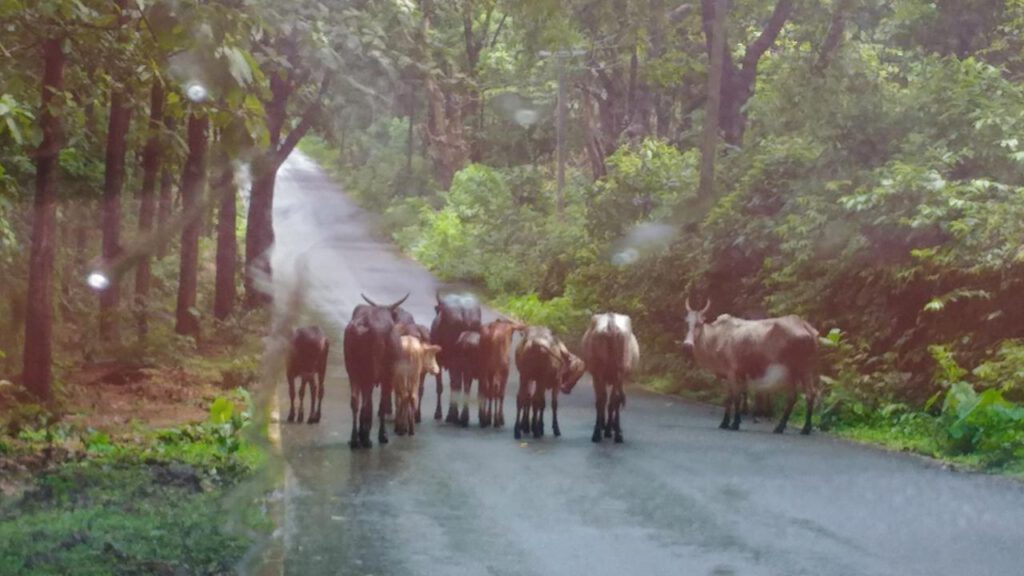
indigenous to Goa. He praised the “tree consciousness” of the Goan people and their innate tendency to plant ‘useful’ trees for domestic consumption.
However, the outdated regulations in force today and the highhandedness of the Forest Department which “zealously guards its hegemony from the people” has only succeeded in antagonizing the people, he said. He called for the restoration of degraded forest lands, reforestation of areas originally planted to monocultures and the reclamation of lands devastated by mining.
Mr Untawale, of the WWF (Goa), expressed concern over the protection of the vegetative cover along the river or estuarine slopes, hills and valleys. He felt that these areas being systematically destroyed today particularly by the growth of hotels along the riverside. Intensive social forestry must be started in the cities, he said.
Two more papers, one by Percival Noronha, on “Forests in Goa: Past and Present” and another, by Vijay Paranjape, on “Dam(ned) Projects and Forest Law” were circulated in absentia.
Small cells could be formed to act as watchdogs at the village level.
Plan of Action
The participants of the seminar expressed widespread disillusionment with the present government machinery. Though the debate failed to take off onto a general plane, being dotted with personal accounts of harassment by government officials, the discussion did plant a few seeds for a more general and fruitful public debate in the future.
In a bid to reduce cases of corruption among officials and private parties, it was suggested that public blacklisting be done of individuals and institutions engaged in unforestry acts. They expressed the need for protest marches in the territory in order to focus public attention on so grave an issue.
A working or core group was formed at the final session of the seminar. They shall draw up a follow-up programme and soon announce their plan of action. People concerned about the issue of forestry in Goa may contact GRID, Bella Mater Bldg, Flat No. 3, Santa Inez, Panjim.
Urgent Need
There is an urg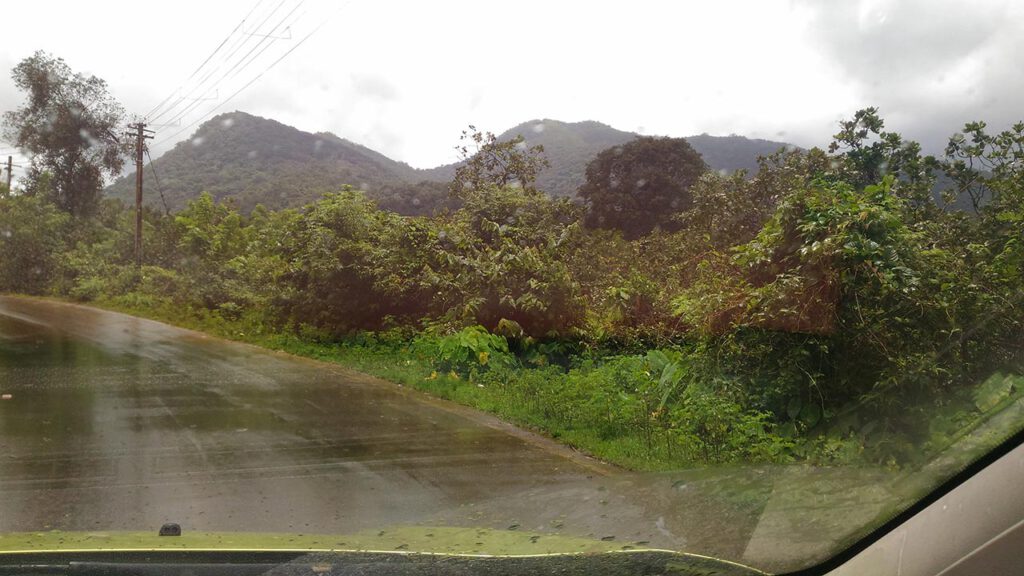 ent need to transform this exercise into a people’s movement. It is high time we realized that if such programmes are to succeed, they require the active cooperation of the people. What we need in Goa today is the people’s opinion on matter of general concern. The more educated and knowledgeable of our people ought to discuss such issues in their own circles and thus generate an opinion; otherwise there will be people talking at seminars and others only listening and blindly accepting.
ent need to transform this exercise into a people’s movement. It is high time we realized that if such programmes are to succeed, they require the active cooperation of the people. What we need in Goa today is the people’s opinion on matter of general concern. The more educated and knowledgeable of our people ought to discuss such issues in their own circles and thus generate an opinion; otherwise there will be people talking at seminars and others only listening and blindly accepting.
For the benefit of those of us who are in the dark about issues like forestry in Goa, private bodies and the government must cooperate and come forward to conscientize the people. There are many people in our villages who do not know what procedure to follow when they want to cut trees they themselves had planted years ago. They fall prey to corruption.
Small cells could be formed to act as watchdogs at the village level. However, care must be taken to see that forest plunderers themselves don’t head them. No amount of legislation can save us from disaster if the people are not vigilant. No amount of seminars will be fruitful if we don’t have action-oriented plans.
The need for interaction with the government is paramount. We must also interact with lobbies like mine owners and real estate developers, learn their viewpoint and embark on a cooperative effort to save the land. Lack of cooperation will only mean friction and chaos.
A final word to our political parties: they should consider the idea of introducing subjects like forestry, tourism, art and culture, high and clear in their election manifestos.
